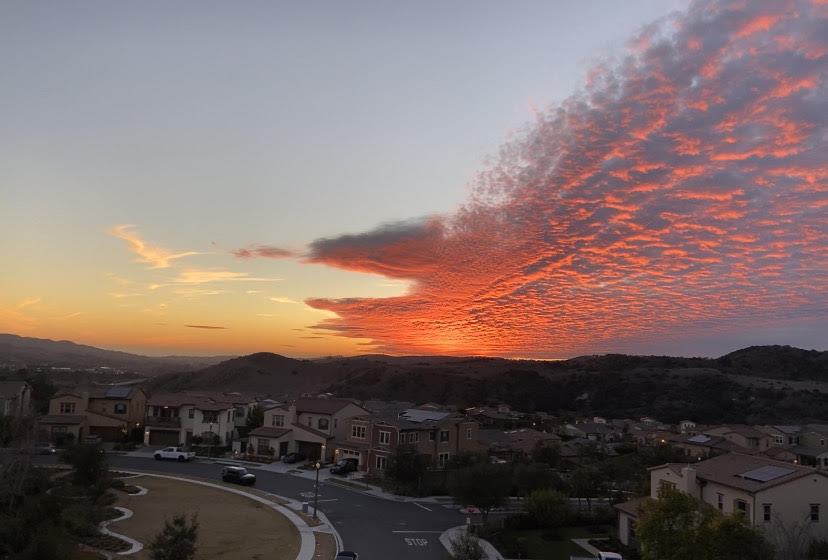A Look at Climate Change in Our World Today
Eight of the last hottest years on record globally have occurred 2010 to 2019, and there doesn’t seem to be any end in sight unless big changes are made.
February 5, 2021
Throughout California, and no doubt the entire world, our atmosphere’s climate is going through a critical time in which the earth is warming and conditions are rapidly changing. The odd weather occurrences recently from the hot spikes in January to sudden and brief rainstorms are all indicative of the much larger problem our planet faces, climate change.
Climate change is the underlying presence of altering weather patterns which reflects the status of Earth’s climate from local to worldwide scales. While the Earth’s climate has changed prior, never before has the Earth seen such rapid change, and this time humans have become the main cause of climate change and the planet’s ever-increasing temperature.
In regards to climate change in California, the United States Environmental Protection Agency says that our climate is constantly changing due to the warming of the planet. In fact, since the late 1700s, or the start of industrialization, people have increased carbon dioxide emissions by 40 percent.
Climate change exists consequently with the massive industrialized activity carried out by humans such as natural gas and oil drilling, transportation of people/goods, power plants, and fossil fuel burning. Climate change does not directly nor instantly come from these acts though.
The key aspect behind climate change and the fuel of this continuously growing threat imposed upon our world is a collection of gaseous compounds known as “greenhouse gases” which naturally exist in the atmosphere. While greenhouse gases are crucial to the survival of living organisms on Earth, the prolonged period of industrialization, along with powerful blows to natural mechanisms, which would’ve reduced the effect of climate change, like deforestation and intensive farming, greenhouse gases have extensively increased.
The spike in greenhouse gas quantities has raised the average temperature of the planet annually. This increase in temperature is known as global warming; consequently, global warming poses a big factor in the rise of climate change.
Set aside from human-made causes and humanity’s persistent impact on the atmosphere, natural processes can also contribute to the steady rise of climate change. These persist in untamable forces such as volcanic eruptions, the intensity of the sun, alterations within the number of different kinds of greenhouse gases.
Evidently, though both natural and anthropogenic influence the constantly-changing patterns of weather we see today in our region and world, humans are undoubtedly the leading cause for climate change. Natural processes have been on our planet and have occurred for millennia, but the more recently introduced activity caused by humans is more detrimental to the magnitude of the Earth, compared to natural causes.
What effect does this threat have on our atmosphere? In fact, the answer to that question is apparent in what we see in our environment, especially recently. While the increase of climate change is not as threatening in our region compared to other crucial regions of the world such as the Arctic and Africa, the potential damage still subsists.
“Warmer conditions will probably lead to more evaporation and precipitation overall, but individual regions will vary, some becoming wetter and others dryer,” says NASA. Not only this, but climate change is typically what causes severe weather swings from prolonged droughts and heat waves to large, deluging storms.
The severity of the change in climate patterns depends on the area and in our local area of California we are seeing a jist of what climate change can potentially look like for the entire world. In regions that are wet, altering weather patterns will cause it to become even wetter; vice versa for dry regions.
In Southern California, the climate is clearly neither extremely wet nor extremely dry; thus, we often see drastic changes in the weather. Take the extreme droughts we have seen for example. From 2012 to 2016, the peak period being in 2014, California experienced a memorable drought that affected nearly 59 percent of the state’s land. Nowadays, though California is still in a partial drought, though the storms received in January have benefited the climate.
The current conditions and patterns which reside in our state however are far beyond a constantly-changing, unpredictable forecast. According to California’s Fourth Climate Change Assessment, the annual daily temperature might increase by 5.6-8.8 degrees and water supply may decrease by two-thirds by 2100 in Southern California. If emissions continue to spike, 77% of the average area will be burned and 31-67% of SoCal beaches might erode by 2100.
On top of the dangerous impact climate change can have on the environment, threats within local agencies, governments, and homes will appear. These challenges include insufficient funding, increases in demands for electricity, and risks to the general well-being and health of populations.
While all of these projections pose a prominent threat to our very own atmosphere, many organizations, including the Environmental Defense Fund and Climate Resolve, have and still are taking steps in releasing necessary information like this, continuously working to raise awareness about climate change for the future.
On a personal level, there are still many things you can do to help prevent the dreadful future of climate change. A couple of easy changes are to invest in renewable energy sources, improvise transportation efficiency, and simply recycling and cutting down food/water waste.
With this in mind, the next time you notice sudden temperature increases or wild weather, take into consideration what this might mean in terms of what is happening in the atmosphere and world.


